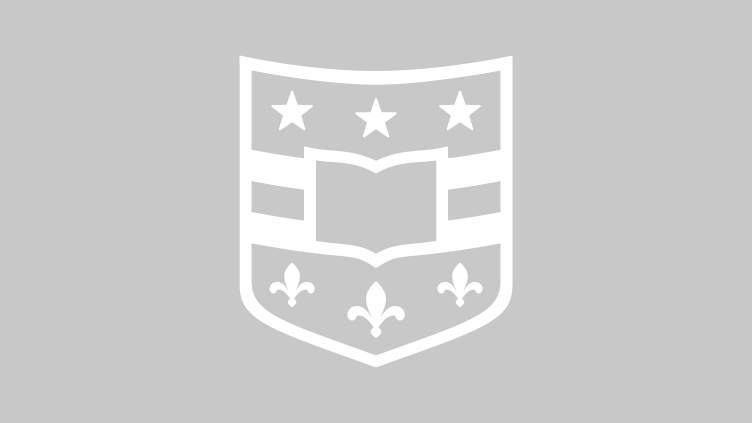Mellon Foundation gives $500,000 to support humanities seminars
WUSTL has received a three-year, $500,000 grant from The Andrew W. Mellon Foundation to support a series of five “Vertical Seminars” in the humanities. The seminars are part of a pilot program to introduce an innovative format of collaborative research, called “The Vertical Seminar,” to the humanities. “The Vertical Seminar” will include scholars of different levels — dissertation students, postdoctoral fellows and junior and senior faculty — working together to examine a series of overarching questions in the humanities.
Free Saturday seminar series addresses ‘Value of Justice’
WUSTL will host a free Saturday Master of Liberal Arts (MLA) Seminar Series in February titled “The Value of Justice.” The annual seminar series features WUSTL experts from the areas of philosophy, social work, political science and anthropology to address one of the most enduring concepts in social, religious, ethical and political thinking: the idea of justice.
Dancer Julie Alexander to perform Feb. 1
Washington University alumnus Julie Alexander will return to campus as the 2010-11 Marcus Artist in the Dance Program in the Performing Arts Department (PAD) in Arts & Sciences. While in residence, she will present a free informal performance, titled “Weaving Traditional Japanese Dance and American Postmodern Dance,” at 7:30 p.m. Tuesday, Feb. 1.
Brookings Institution president to speak about polarization in American politics Feb. 7
Strobe Talbott, president of the Brookings Institution in Washington, D.C., and former deputy secretary of state from 1994-2001, will present “Angels of Our Nature: Polarization in America and Its Challenge to Universities and Think Tanks” at 4 p.m. Monday, Feb. 7, in Whitaker Hall Auditorium at Washington University in St. Louis. Talbott’s policy address will focus on the challenge of polarization in American politics, considered by many to be at its worst level since the late 19th century. He will reflect on the role of universities and think tanks, bastions of fact-based research and academic freedom, as antidotes to the current maladies of America’s political climate.
Gephardt Institute names service-learning grant recipients
The Gephardt Institute for Public Service at Washington University in St. Louis has announced the recipients of the Innovation Grants for Community-Based Teaching and Learning. The grants are intended to provide faculty members with financial support for curriculum development and implementation. The Gephardt Institute also offers technical expertise in key areas of community-based teaching and learning, such as reflection assignments, evaluation methods and tools for working effectively with community partners.
Many heads better than one in Alzheimer’s diagnosis
In a marriage of two disciplines that don’t often overlap — politics and medicine — a study by Matthew Gabel, PhD, professor of political science in Arts & Sciences at Washington University in St. Louis, finds that group consensus is an effective method for diagnosing Alzheimer’s disease.
Doktor Kaboom! at Edison Jan. 29
Banana-slinging catapult? Check! Smoke ring cannons? Check! Bright orange lab coat and goofy protective goggles? Check! Say hello to Doktor Kaboom!, “ze smartest man to ever enter any room.” Later this month, the humble Doktor will bring his sidesplitting, family-friendly tour of the modern scientific method to Washington University’s Edison Theatre for a special one-time-only performance.
Washington University Chamber Orchestra to present ‘Follow the Fugue’ Jan. 24
The Washington University Chamber Orchestra will present “Follow the Fugue,” a concert of fugues in a variety of forms and arrangements, at 8 p.m. Monday, Jan. 24, in Graham Chapel. The program will feature examples by Johann Sebastian Bach, Franz Joseph Haydn, Felix Mendelssohn, Ludwig van Beethoven and Ernst Toch.
2011-12 tuition, room, board and fees announced
Undergraduate tuition at Washington University in St. Louis will be $40,950 for the 2011-12 academic year — a $1,550 (3.9 percent) increase over the 2010-11 current academic tuition of $39,400. The required student activity fee will total $410, and the student health fee will be no more than $632. Barbara A. Feiner, vice chancellor for finance, made the announcement.
Through anthropological lenses
Growing up in Maryland, Shanti A. Parikh, PhD, knew early on she wanted to be an anthropologist. But at the encouragement of her
p.MsoNormal, li.MsoNormal, div.MsoNormal
{margin-top:0in;margin-right:0in;margin-bottom:10.0pt;margin-left:0in;line-height:115%;font-size:11.0pt;font-family:Calibri;}
.MsoChpDefault
{font-size:10.0pt;}
@page WordSection1
{size:8.5in 11.0in;margin:1.0in 1.25in 1.0in 1.25in;}
div.WordSection1
{page:WordSection1;}
mother, Parikh majored in finance at the University of Virginia. A stint in the Peace Corps following graduation returned Parikh to her original passion and to the area of study that would remain her lifetime focus.
View More Stories
